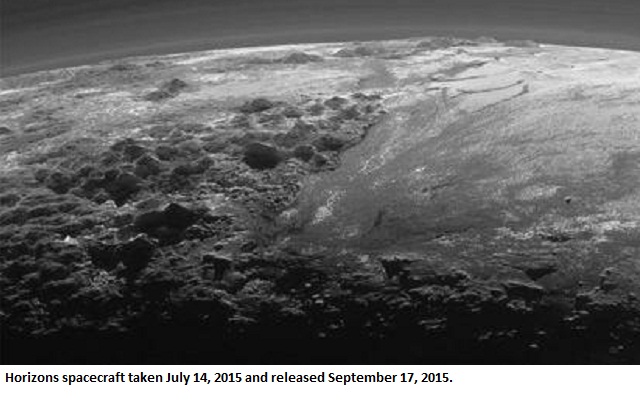"The Pluto system is baffling us," planetary scientist Alan Stern, with the Southwest Research Institute in Boulder, Colorado, told reporters during a webcast news conference.
Stern heads the team working on NASA`s New Horizons spacecraft, which made an unprecedented pass by Pluto on July 14.
Pictures and measurements taken during the encounter are still being transmitted back to Earth.
Among 50 reports that New Horizons scientists will present this week is a startling look at two mountains on the surface of Pluto, each measuring more than 100 miles (161 km) in diameter and several miles (km) in height. The tops of the mountains have depressions similar to volcanoes found on Mars and Earth.
"Nothing like this has ever been seen in the outer solar system," said New Horizons scientist Oliver White, with NASA`s Ames Research Center in Moffett Field, California.
Rather than spewing molten rock, volcanoes on Pluto would have released frozen water, and other ices such as nitrogen, ammonia or methane.
White admits the idea of volcanoes on Pluto, which is about 30 times farther away from the sun than Earth, sounds crazy, "but it`s the least crazy thing we can thing of" to explain the mountains.
"Whatever they are, they`re definitely weird," White said.
New Horizons also found several deep fractures in Pluto`s surface, the largest of which spans more than 200 miles (322 km)in length. The top of the fracture is about 2.5 miles (4 km)higher than the base - more than twice as high as walls of the Grand Canyon.
"The fact that there are so many large faults in this part of Pluto indicates that the crust has experienced a major extension at some point in its history," White said.
Scientists suspect the decay of naturally occurring radioactive elements in Pluto`s core was the heat source for its transformation.
New Horizons is on track for a possible January 2019 pass by another frozen mini world in the Kuiper Belt region of the solar system, which is home to Pluto, its moons and thousands of other icy bodies.
More about:
















































